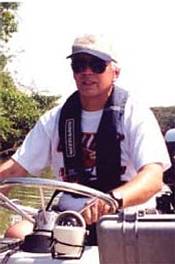
John Downing
Title(s):
Information
American Society of Limnology and Oceanography, elected member of the Board of Directors, 2006-2009
Water Encyclopedia, invited co-editor, Elsevier Publishers
North American Nitrogen Center, invited member of Board of Directors, 2004
National Center for Ecological Analysis and Synthesis, invited participant, workshop on integration of terrestrial and aquatic carbon cycling
Natural Sciences and Engineering Research Council of Canada, Invited member and president of Evolution and Ecology Panel, 2003-2000
Interest Areas
Publications
Downing, J.A.,Y.T. Prairie, J.J. Cole, C.M. Duarte, L.J. Tranvik, R.G. Striegl, W.H. McDowell, P. Kortelainen, N.F. Caraco, J.M. Melack, and J. Middelburg. 2006.The global abundance and size distribution of lakes, ponds, and impoundments. Limnology and Oceanography 51(5): 2388-2397 (L&O Feature Article)
Egertson, C.J. and J.A. Downing. 2004. Relationship of fish catch and composition to water quality in a suite of agriculturally eutrophic lakes. Canadian Journal of Fisheries and Aquatic Science 61: 1784-1796.
Strayer, D.L., J.A. Downing, W.R. Haag, T.L. King, J.B. Layzer,T.J. Newton, and S.J. Nichols. 2004. Changing perspectives on pearly mussels, North America’s most imperiled animals. BioScience 54 (5): 429-439.
Schrage, L.J. and J.A. Downing. 2004. Pathways of increased water clarity after benthivorous fish removal from Ventura Marsh; a shallow, eutrophic wetland. Hydrobiologia 511: 215-231.
Klatt, J.G., A.P. Mallarino, J.A. Downing, J.A. Kopaska and D.J. Wittry. 2003. Soil phosphorus, management practices, and their relationships to phosphorus delivery in the Iowa Clear Lake agricultural watershed. Journal of Environmental Quality 32: 2140-2149.
Anthony, J.L. and J.A. Downing. 2003. Physical and chemical impacts of wind and boat traffic on Clear Lake, Iowa, USA. Lake and Reservoir Management. 19: 1-14.